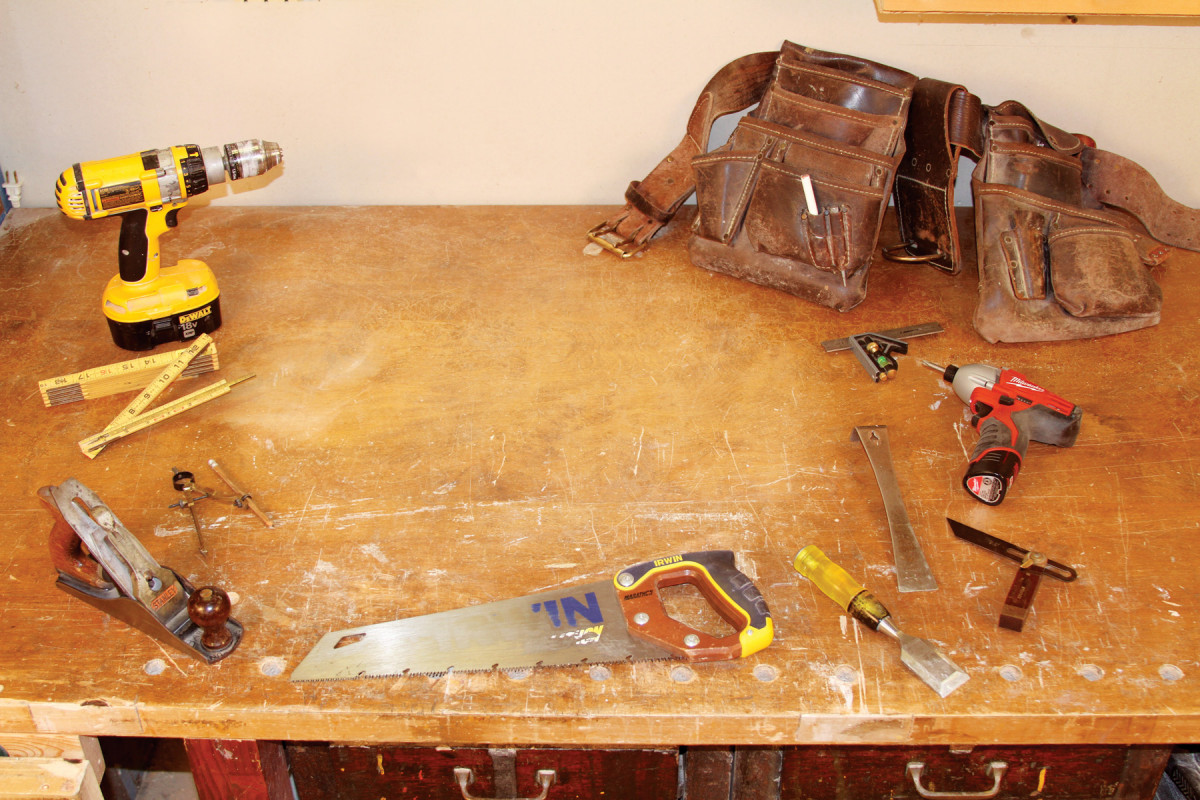We may receive a commission when you use our affiliate links. However, this does not impact our recommendations.

Here’s what one pro always keeps in his toolbox.
My favorite tools are the ones that I use every day—around the house, in the shop or at a jobsite. They’ve become old friends. They’re not complicated, gimmicky or gold-plated. Seven of them cost less than $20 apiece.
My everyday kit also includes a few obvious tools not shown here, such as a hammer, tape measure, screwdriver, carpenter’s pencil and a utility knife. The ten tools I’ve arranged on my bench round out that set. Let me introduce you to my pals:
Cordless drill
This tool is a must for drilling holes of any size. I also use it for driving small screws. After adjusting its clutch to a very light torque setting, I’ll set the drill to its low speed and use the variable-speed trigger to turn the screw very slowly. For large screws, I use an impact driver.
Lufkin 6′ folding rule
I really like this rule’s extension slide for measuring inside something.
Compass
I use this mainly for scribing cabinets and trim in order to get a good fit against an uneven wall. I also use it for bisecting angles, along with a sliding bevel. And, oh yeah, I use it for drawing circles as well.
No. 3 Stanley plane
This plane is shorter, narrower and lighter than a No. 4, but that makes it easier to use in awkward situations. I can even hold it upside down without too much effort.
Irwin ProTouch 15″ handsaw
With a good saw, cutting by hand is just as fast and accurate as using a machine. It’s certainly a lot more enjoyable. This saw has fine 12-pt. teeth up front for accurately starting a cut; the rest of the saw has coarse 9-pt. teeth. Look for model 2011201. I love it!
1-1/2″ Stanley No. 60 butt chisel
Once in a while, I beat the snot out of this thing—and it can take it. A butt chisel is shorter than a standard chisel, which makes it easier to store in my tool belt. I use it for splitting 2x4s, letting in a butt hinge, paring a miter and everything in between.
Sliding bevel
Corners are never truly square, are they? This is an essential tool for measuring the angle of a corner when laying out miters on house trim, especially baseboards.
Small pry bar
It’s for removing trim, of course, but I also place it under the claw end of a hammer when I’m removing a nail, to protect the wood.
Impact driver
This tool is for driving screws, not drilling holes. An impact driver has much more torque than a cordless drill. I like its small size, especially when I’m standing in an awkward position while hanging a cabinet.
Swanson 6″ combination square
Nope, not a 12″—a 6″ has better balance and comfortably stores in my tool belt. I use it as a square, a depth gauge, a height gauge and a marking gauge.
Here are some supplies and tools we find essential in our everyday work around the shop. We may receive a commission from sales referred by our links; however, we have carefully selected these products for their usefulness and quality.








